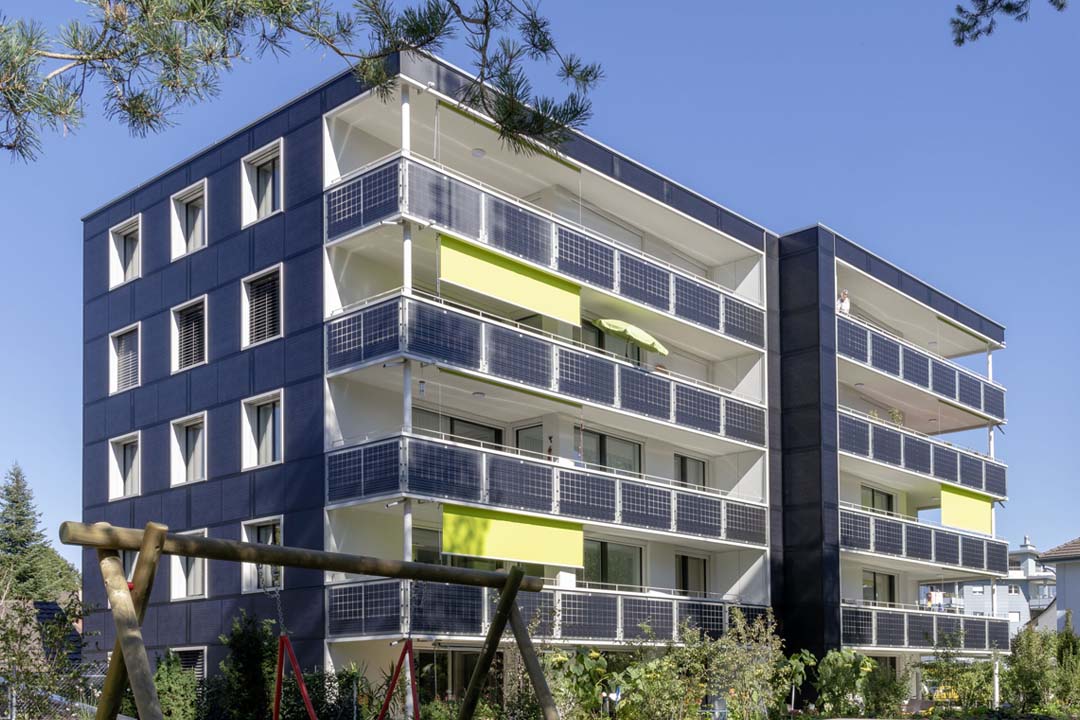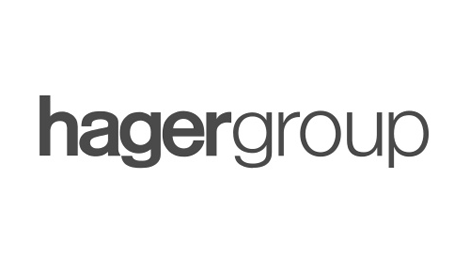Hager Group – German residential: the switch to 100% electric
What hurdles exist within the German residential sector when it comes to achieving the country’s lofty energy transition goals?
Norbert Röhl, an expert at Hager Group, assesses the German residential market’s transition to green energy and explores some solutions.
As the world comes to realise the importance of protecting our environment, governments are looking for ways to phase out fossil fuels and “dirty” energy sources. As a result, we are seeing a widespread shift toward sustainable electric energy sources. Germany is a world leader in this arena with international markets closely watching the roll-out of its energy transformation programme. Despite this leading position, there is increasing pressure to further accelerate the transformation, for instance, to reduce dependency on natural gas. In short, the future is electric.
Currently, there are approximately 19.25 million residential buildings in Germany. The energy used to provide heat and hot water for these buildings accounts for 27 percent (633 TWh/a) of the country’s total energy consumption and generates 18% of the country’s total CO2 emissions (132m t CO2e). It is also worth noting that 60% of the residential buildings in Germany were built before 1979, which means they were not built in accordance to the German heat insulation regulation. Such older buildings require up to four times as much energy for heating when compared to new buildings.
Since the greatest potential for reducing greenhouse gas emissions lies in existing buildings, policymakers have shifted the subsidy framework to focus on this area.
Background: Germany’s residential market
The housing market in Germany is divided into new and existing buildings, which are further divided into two groups: single/two-family houses and multi-family houses. Both government statistics and company solutions are focused on these groups.
In terms of the transition to green energy, the single and dual-family home new construction market is more advanced. This market segment benefits from many choices when it comes to photovoltaic energy production, energy storage and heat-pump solutions. Learnings from the “passive house” and other low-energy construction methods also help to reduce consumption needs for newly built houses. New homes are generally built to a very high standard, but the process of updating older homes in this category is also quite favourable, thanks to easy access to many good technologies, government stimuli to implement clean energy solutions, as well as fewer regulatory and organisational hurdles.
Single and dual family homes represent approximately 80% of existing residential buildings in Germany. Multi-resident buildings, defined as buildings with three or more flats, make up the rest. Yet these buildings offer great potential for energy and CO2 savings, as they lag far behind single/dual family homes, both in terms of implementation and the solutions available.
For that reason, it is imperative for the market to put an increased focus on moving multi-resident buildings towards green, electric energy if Germany wants to reach its goal of becoming CO2-neutral by 2045. Further impetus comes from the EU Commission putting pressure on the multi-residential sector, seeking to enforce mandatory renovation for buildings with poor energy efficiency by 2033. Owners of multi-residential buildings who don’t comply may no longer be allowed to let out their properties.
Hurdles to overcome in the multi-residential sector
While insulation and water consumption are very important factors, let’s focus here on the electric modernisation of multi-residential buildings. The first step is to upgrade the electrical infrastructure in existing buildings to enable energy generation and distribution in the buildings, as well as modern energy management systems. This must be done before installing photovoltaic (PV), energy storage or heat pump systems. Smart meters and open interfaces can help tenants and owners keep track of energy consumption and potential savings in real time.
Unfortunately, building owners can face regulatory hurdles, for example, if they want to install a PV system and sell the energy to their tenants, rather than feeding it back into the network. Currently, the legal framework in Germany is changing so that landlords can more easily distribute (i.e. sell) self-generated energy to their tenants. Of course, the situation varies according to country. Although we are only in the early stages, some suppliers are already helping building owners to create additional revenue by selling PV to tenants using the so-called “Mieterstrommodel” (renter electricity model). The housing industry is currently faced with the decision of setting up its own departments and business models or relying on external service providers. The market is currently very agile, characterized by existing service providers, but above all by start-ups.
Energy storage technologies must also be developed for multi-residential buildings. Many solutions already exist for single and dual-family homes, but the multi-residential sector lags behind. There is great potential emerging here and companies, such as Hager Group, are working on this and have already developed very advanced solutions. One of these solutions was for example implemented in a 10-unit apartment house in Switzerland, which – with the help of E3/DC products – enables energy self-sufficiency of about 60%.

The next step involves the expansion of distributed energy generation (Quartiersnahe Energieerzeugung) based on the success of existing pilot projects. Local grids must become smart grids that enable the integration of the growing solar supply from the residential sector, energy generation from wind power and, above all, the integration of electric mobility. They also need to provide tariffs that promote this flexibility rather than impede it.
Although there is high demand for smart electric solutions in the German residential market, there is a lack of resources in multiple respects: i.e. a current lack of raw materials to produce products; a lack of skilled workers to actually produce them; and, as a result, a lack of PV solutions produced in Germany and Europe. Furthermore, the global market generally lacks energy storage solutions that are powerful enough for multi-residential applications. Of course, government incentives are still needed, but this problem of supply and demand must absolutely be overcome.
Overall promising outlook
Despite the hurdles outlined above, we will continue to see major growth in PV energy production, energy storage and heat-pump solutions for multi-residential buildings, largely due to the German government’s goal to reduce CO2 emissions by 65% compared to 1990 levels by 2035. The federal government’s plan also foresees that much of this energy should be generated using PV and heat-pump solutions in buildings, and these will require energy storage solutions within the buildings.
As a result, the German market can expect to witness large-scale implementation of these technologies over the coming years. This also means that producers of residential solutions will have to quickly adapt their manufacturing to cater to these new needs. Producers who cannot shift away from fossil fuel-based technologies will continuously lose their shares of the market as consumers stop buying older technologies. Fortunately, many clean energy solutions – such as these – are already available for single/dual family homes, and multi-residential applications are not far behind.
Source
Hager Group
EMR Analysis
More information on Hager: See the full profile on EMR Executive Services
More information on Daniel Hager (CEO, Hager Group): See the full profile on EMR Executive Services
More information on Norbert Röhl (Business Development Manager, Residential Construction, Hager Group): See the full profile on EMR Executive Services
More information on E3/DC: https://www.e3dc.com/en/about-us/?noredirect=en_US#Quality + The company name E3/DC is derived from an acronym of the German words, “einsparend, erneuerbar, effektiv” (saving, renewable, effective), hence E3, and DC or direct current. Since the company was founded, over 40,000 home power stations and Quattroporte systems are up and running at our customers’ premises, and are making a contribution towards the environmentally-friendly and cost-saving provision of energy. In our locations in Osnabrück, Wetter an der Ruhr and Göttingen, we have a workforce of more than 170 employees, who strive to make the vision of independent houses and enterprises, and also solar electric mobility a reality. By storing and using solar energy, our independence from fossil fuel energy increases. Our energy supply can become up to 100 % autonomous. Every year, we produce over 16,000 home power stations, which are manufactured exclusively in Germany, and are subject to the strictest quality controls, in accordance with the ISO 9001 standard.
More information on Dr. Andreas Piepenbrink (Executive Vice President Energy Management Development, Hager Group): See the full profile on EMR Executive Services
EMR Additional Notes:
- Carbon Dioxide (CO2):
Primary greenhouse gas emitted through human activities. Carbon dioxide enters the atmosphere through burning fossil fuels (coal, natural gas, and oil), solid waste, trees and other biological materials, and also as a result of certain chemical reactions (e.g., manufacture of cement). Carbon dioxide is removed from the atmosphere (or “sequestered”) when it is absorbed by plants as part of the biological carbon cycle. - Decarbonization:
Reduction of carbon dioxide emissions through the use of low carbon power sources, achieving a lower output of greenhouse gasses into the atmosphere.
- Grid, Microgrids and DERs:
- The power grid is a network for delivering electricity to consumers. The power grid includes generator stations, transmission lines and towers, and individual consumer distribution lines.
- The grid constantly balances the supply and demand for the energy that powers everything from industry to household appliances.
- Electric grids perform three major functions: power generation, transmission, and distribution.
- A microgrid is a small-scale power grid that can operate independently or collaboratively with other small power grids. The practice of using microgrids is known as distributed, dispersed, decentralized, district or embedded energy production.
- Smart Grid is any electrical grid + IT at all levels . Micro Grid is a group of interconnected loads and DERs (Distributed energy resources) within a clearly defined electrical and geographical boundaries witch acts as a single controllable entity with respect to the main grid.
- Distributed energy resources (DERs) are small-scale electricity supply (typically in the range of 3 kW to 50 MW) or demand resources that are interconnected to the electric grid. They are power generation resources and are usually located close to load centers, and can be used individually or in aggregate to provide value to the grid.
- Common examples of DERs include rooftop solar PV units, natural gas turbines, microturbines, wind turbines, biomass generators, fuel cells, tri-generation units, battery storage, electric vehicles (EV) and EV chargers, and demand response applications.
- Global Warming: Global warming is the long-term heating of Earth’s climate system observed since the pre-industrial period (between 1850 and 1900) due to human activities, primarily fossil fuel burning, which increases heat-trapping greenhouse gas levels in Earth’s atmosphere.
- Global Warming potential (GWP):
- The heat absorbed by any greenhouse gas in the atmosphere, as a multiple of the heat that would be absorbed by the same mass of carbon dioxide(CO2). GWP is 1 for CO2. For other gases it depends on the gas and the time frame.
- Carbon dioxide equivalent (CO2e or CO2eq or CO2-e) is calculated from GWP. For any gas, it is the mass of CO2 which would warm the earth as much as the mass of that gas. Thus it provides a common scale for measuring the climate effects of different gases. It is calculated as GWP times mass of the other gas. For example, if a gas has GWP of 100, two tonnes of the gas have CO2e of 200 tonnes.
- GWP was developed to allow comparisons of the global warming impacts of different gases.
- Greenhouse Gas (GHG):
- A greenhouse gas is any gaseous compound in the atmosphere that is capable of absorbing infrared radiation, thereby trapping and holding heat in the atmosphere. By increasing the heat in the atmosphere, greenhouse gases are responsible for the greenhouse effect, which ultimately leads to global warming.
- The main gases responsible for the greenhouse effect include carbon dioxide, methane, nitrous oxide, and water vapor (which all occur naturally), and fluorinated gases (which are synthetic).


